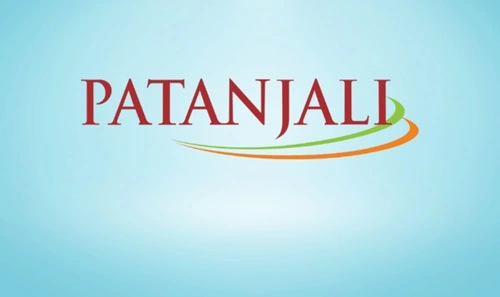Patanjali Ayurved, founded in 2006 by yoga guru Baba Ramdev and Acharya Balkrishna, has grown from a small Ayurveda-focused brand to one of India’s largest FMCG (fast-moving consumer goods) companies. With a strong emphasis on natural and Ayurvedic products, Patanjali has tapped into a rising demand for wellness and health-based products in India. Its aggressive marketing, low-cost positioning, and wide range of offerings have allowed it to challenge established FMCG giants like Hindustan Unilever, Dabur, and Nestlé in a short span. This SWOT (Strengths, Weaknesses, Opportunities, Threats) analysis explores Patanjali’s market position, highlighting the strengths and challenges it faces in a rapidly evolving FMCG sector.

Strengths
1. Strong Brand Equity and Nationalist Appeal:
Patanjali has successfully positioned itself as a “Made in India” brand with a strong nationalist appeal. By emphasizing its Indian roots and commitment to promoting traditional Ayurvedic knowledge, Patanjali resonates well with consumers who value local brands. This patriotic positioning, along with Baba Ramdev’s popularity and influence, has allowed Patanjali to gain widespread acceptance and trust, particularly among rural and middle-class Indian consumers.
2. Diverse Product Portfolio:
Patanjali’s extensive product portfolio spans various categories, including food, beverages, personal care, health supplements, home care, and even apparel. This diversification enables Patanjali to meet a wide range of consumer needs and has positioned the brand as a one-stop shop for Ayurvedic and natural products. Notable products like Dant Kanti (toothpaste), Aloe Vera Gel, and cow ghee have become household names in India, enhancing Patanjali’s brand recall and cross-category appeal.
3. Strong Distribution Network and Deep Rural Penetration:
Patanjali has established a robust distribution network with a strong presence in rural areas, where demand for natural and Ayurvedic products is particularly high. With over 5,000 franchise stores, 50,000 retail outlets, and a growing presence in major supermarkets, Patanjali has been able to reach a wide demographic. This extensive distribution network enables Patanjali to serve customers across Tier 2, Tier 3, and rural areas, providing an advantage over competitors who are more urban-focused.
4. Cost-Effective Pricing Strategy:
Patanjali’s pricing strategy, focused on affordability, has made it popular among price-conscious Indian consumers. The company’s low-cost approach has allowed it to undercut competitors, particularly in essential FMCG categories like toothpaste, ghee, and personal care. By focusing on affordability, Patanjali appeals to a broad consumer base, especially in lower-income segments, where budget-friendly options are in demand.
Weaknesses
1. Quality Control and Regulatory Challenges:
Patanjali has faced criticism over the quality and efficacy of some of its products, with certain items failing quality checks or facing regulatory issues. Allegations of misleading health claims and product recalls have impacted the brand’s credibility, especially in urban markets where consumers are more discerning. Quality control issues and regulatory scrutiny pose a challenge to Patanjali’s long-term growth, as maintaining consumer trust is essential in the highly competitive FMCG market.
2. Over-Reliance on Founder’s Influence:
Baba Ramdev’s influence and public image have been instrumental to Patanjali’s success. However, this heavy reliance on his personality and popularity presents a potential risk, as any controversies or image-related issues could negatively affect Patanjali’s brand perception. The company’s marketing approach, which heavily features Baba Ramdev, could limit its appeal among urban and younger consumers who may prefer less personality-driven brands.
3. Limited Innovation and Product Differentiation:
While Patanjali offers a wide variety of products, it has been criticized for a lack of innovation and differentiation. Many of its products, including personal care and packaged food items, closely resemble competitors’ offerings in terms of packaging and formulation. This lack of unique, value-added products makes it difficult for Patanjali to stand out in a crowded market, particularly in urban areas where consumers seek novel and premium products.
4. Challenges in Expanding Beyond India:
Patanjali’s strong nationalist appeal and reliance on traditional Ayurvedic formulations have made international expansion challenging. Global markets, especially in the West, have strict regulatory standards, and Ayurveda lacks widespread acceptance outside South Asia. Patanjali’s limited global presence restricts its ability to diversify revenue streams, leaving it heavily dependent on the Indian market for growth.
Opportunities
1. Growing Demand for Natural and Ayurvedic Products:
The demand for natural, organic, and Ayurvedic products has surged in India and globally, driven by increased health awareness and a preference for chemical-free options. Patanjali’s foundation in Ayurveda positions it well to capitalize on this trend. By continuing to expand its range of Ayurvedic products and emphasizing wellness-oriented offerings, Patanjali can attract consumers who prioritize health-conscious and natural alternatives.
2. Expanding into New Product Categories:
Patanjali has already ventured into diverse segments, and there are significant opportunities to further expand its product portfolio. The company can explore categories like plant-based foods, organic cosmetics, and eco-friendly home care products, which align with its natural and Ayurvedic positioning. Additionally, Patanjali could benefit from expanding its nutraceutical and health supplement offerings, especially as demand for immunity-boosting and wellness products remains high.
3. Focus on E-commerce and Digital Channels:
The pandemic accelerated the adoption of e-commerce in India, and online shopping has become a preferred mode for many consumers. Patanjali has a unique opportunity to strengthen its digital presence by investing in its e-commerce platform and partnering with major online retailers. Increasing its focus on digital channels will enable Patanjali to reach tech-savvy urban consumers, enhance brand visibility, and compete more effectively with digital-native brands.
4. Strategic Partnerships and Joint Ventures:
Patanjali can explore partnerships with global brands or healthcare companies to strengthen its product portfolio and expand its market reach. Collaborations with established companies could help Patanjali enter premium segments and international markets. Additionally, joint ventures in technology-driven fields like personalized health and wellness could enhance Patanjali’s offerings, appealing to a wider consumer base.
Threats
1. Intense Competition from FMCG Giants:
Patanjali faces stiff competition from established FMCG players like Hindustan Unilever, Dabur, and Emami, as well as newer entrants like Reliance’s consumer brands. These companies are aggressively expanding their Ayurvedic and natural product lines to capture the same health-conscious audience. This competition puts pressure on Patanjali to continuously innovate and improve its offerings, as rivals with larger financial resources can easily capture market share through aggressive marketing and distribution.
2. Regulatory Risks and Quality Scrutiny:
As Patanjali operates in sectors subject to stringent quality and safety standards, it faces regulatory risks that could affect its operations. Government scrutiny of health claims, quality issues, and compliance with labeling standards could lead to product bans or recalls, impacting Patanjali’s brand image. Maintaining regulatory compliance is essential to avoid potential penalties and protect consumer trust.
3. Economic Slowdowns and Changing Consumer Preferences:
The FMCG industry is sensitive to economic cycles, and slowdowns can lead to reduced consumer spending, particularly on discretionary products. Patanjali’s reliance on lower-income and rural segments makes it vulnerable to economic downturns, which may lead to reduced sales of premium items. Additionally, as consumer preferences shift towards premium, eco-friendly, and cruelty-free products, Patanjali may need to adapt its offerings to remain relevant to younger consumers.
4. Dependency on Natural Resources and Supply Chain Vulnerabilities:
Patanjali’s products rely heavily on natural ingredients, making it vulnerable to fluctuations in the supply and cost of raw materials due to environmental factors. Disruptions in the supply chain, such as those caused by climate change or crop failures, could impact production and lead to price increases. Maintaining a sustainable supply chain is crucial for Patanjali to continue offering affordable products.
Future Outlook
The future for Patanjali Ayurved looks promising, but success will depend on how well the company adapts to changing consumer demands and navigates industry challenges. The growing trend toward natural and Ayurvedic products provides Patanjali with ample growth opportunities. As consumer health awareness rises, Patanjali’s Ayurvedic positioning aligns well with these preferences, positioning it as a strong player in the wellness market.
Expanding its presence in Tier 2 and Tier 3 cities, where demand for affordable Ayurvedic and natural products is growing, will be a crucial growth driver. However, to sustain its growth, Patanjali must also focus on urban markets, where it faces fierce competition. Enhancing its product quality, innovating with unique offerings, and expanding its portfolio to include premium products can help it capture a wider demographic, especially among younger and urban consumers.
Additionally, building a stronger digital presence is essential to remain competitive in India’s rapidly digitizing retail market. By investing in e-commerce and leveraging social media, Patanjali can reach urban consumers and improve brand visibility. Addressing quality concerns through improved R&D and strict quality control measures will also be critical in establishing credibility and retaining customer trust.
To achieve sustained growth, Patanjali will need to overcome regulatory challenges, adapt to environmental pressures on its supply chain, and differentiate its products in a crowded FMCG landscape. While the road ahead is challenging, Patanjali’s strengths in brand loyalty, affordability, and deep-rooted connections with Indian consumers give it a solid foundation to continue its success in India’s competitive FMCG sector. With strategic focus, Patanjali has the potential to become not only an Ayurvedic giant but also a diversified FMCG powerhouse in India.

